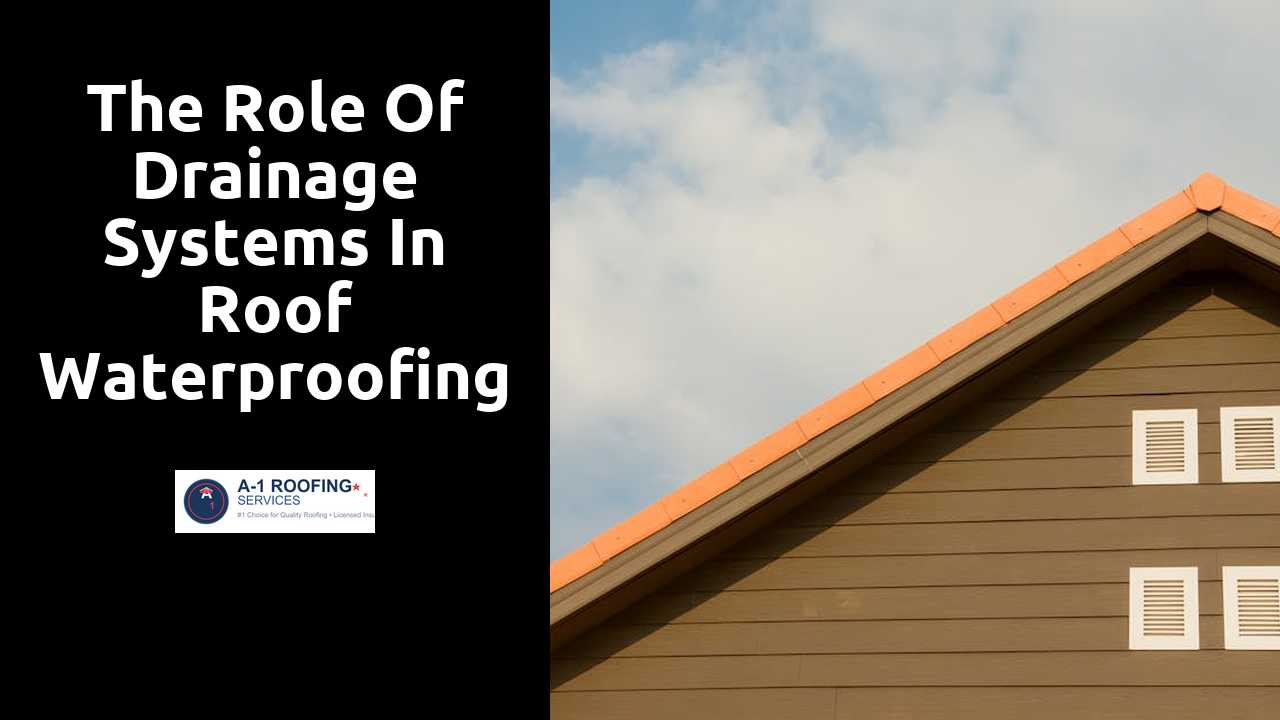
The Role of Drainage Systems in Roof Waterproofing
Table Of Contents
Maintenance for Long-lasting Drainage Systems
Regular maintenance is essential to ensure that drainage systems operate efficiently and effectively. This involves routine inspections to identify blockages, leaks, and signs of wear. Cleaning gutters, downspouts, and drains can help prevent the accumulation of debris that might hinder water flow. Additionally, checking for rust or damage in metal components and ensuring that seals and joints are in good condition contributes to the longevity of the system.
Periodic professional assessments can also be beneficial. Experts can provide insights into potential vulnerabilities and recommend upgrades based on technological advancements in drainage solutions. Investing in high-quality materials and components can further enhance durability, reducing the frequency of repairs. By prioritizing maintenance, property owners can achieve a more reliable drainage system that effectively protects roofs from water damage over time.
Continue reading this article for more information.
Regular Checks and Repairs
Routine inspections are essential to ensure the effectiveness of drainage systems. Over time, debris such as leaves, dirt, and even small branches can accumulate, leading to blockages that restrict water flow. Homeowners should schedule seasonal checks to assess the condition of gutters, downspouts, and drains. Identifying issues early can prevent significant damage to roofing and foundation structures.
Regular maintenance should also include cleaning out any accumulated debris and performing necessary repairs. Small leaks or cracks can develop in drainage materials, leading to larger problems if left unaddressed. Ensuring gutter attachments are secure and evaluating the slope of the drainage system help direct water efficiently away from the roof. Establishing a routine maintenance schedule will extend the lifespan of drainage systems, contributing to overall roof waterproofing.
Impact of Climate on Drainage Needs
Climate plays a crucial role in determining the efficiency of drainage systems. Areas experiencing heavy rainfall require robust systems capable of handling significant water flow. In contrast, regions with dryer conditions may not need as extensive infrastructure, yet still benefit from effective water management practices. The frequency and intensity of storms also influence the design and maintenance of drainage systems, pushing updates and enhancements to meet evolving demands.
Temperature variations can further complicate drainage needs. Freezing and thawing cycles can lead to pipe or channel damage if not properly accounted for in system design. Additionally, rising temperatures may cause increased evaporation rates, altering water needs for certain regions. Adapting drainage systems to these climatic factors not only enhances their effectiveness but also prolongs their lifespan, underscoring the importance of integrating weather patterns into planning and construction.
Adapting Systems to Environmental Factors
Environmental factors significantly influence the efficiency of drainage systems in roof waterproofing. For instance, areas that experience heavy rainfall require systems designed to handle increased water flow, whereas regions prone to drought might not need as robust a setup. Adapting to local climate patterns ensures that roof drainage can effectively manage water runoff, preventing potential damage to roofing materials and underlying structures.
Seasonal changes also play a critical role in the design of drainage systems. In colder climates, systems must accommodate snow and ice melt, which can add considerable weight and water volume to rooftops. Implementing features such as heated drainage lines can mitigate ice buildup, while adjustable gutters can be beneficial for managing varying precipitation levels throughout the year. Customizing drainage solutions fosters resilience, maintaining functionality across different environmental conditions.
Innovations in Drainage Technology
Recent advancements in drainage technology have introduced a variety of innovative materials and designs aimed at enhancing performance and longevity. One notable development is the use of porous pavement systems, which allow water to permeate through surfaces rather than run off. This not only reduces the burden on traditional drainage systems but also minimizes the risk of flooding in surrounding areas. Biofiltration systems have also gained traction, utilizing natural processes to filter contaminants before stormwater enters drainage systems. These eco-friendly methods contribute to both improved water quality and the overall resilience of urban infrastructures.
Smart drainage solutions are transforming how systems are monitored and maintained. Integrated sensors can provide real-time data regarding water levels, flow rates, and sediment accumulation. This technology enables property owners to receive alerts when maintenance is necessary, thereby preventing potential issues before they escalate. Additionally, the incorporation of sustainable practices in drainage design, such as green roofs and rain gardens, allows for more effective stormwater management. By embracing these innovative approaches, the management of roof water becomes more efficient and environmentally responsible.
Emerging Trends and Materials
New materials are revolutionizing drainage system installations, making them more efficient and eco-friendly. Permeable pavements and biofiltration systems are gaining popularity due to their ability to manage stormwater while promoting groundwater recharge. These innovative materials not only help control runoff but also contribute to a more sustainable urban environment. The integration of recycled materials into drainage designs is also becoming common, minimizing waste and reducing the environmental footprint of construction.
Technological advancements are driving the adoption of smart drainage solutions that enhance monitoring and performance. Sensors and IoT technology are being incorporated into systems, allowing for real-time data collection on water flow and potential blockages. This proactive approach helps in the early identification of issues, thus reducing maintenance costs and improving system longevity. Furthermore, integration with building management systems can lead to more coordinated efforts in protecting rooftops and exterior areas from water damage.
Related Links
Step-by-Step Guide to Applying Waterproof CoatingsChoosing the Right Waterproofing Material for Your Roof